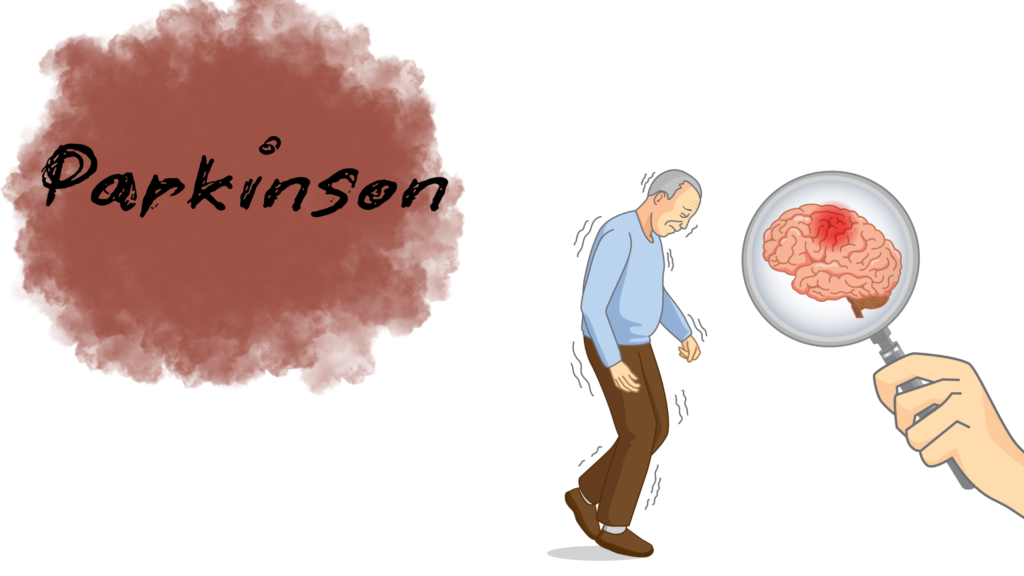🧠 Parkinson’s Disease – Overview
Parkinson’s disease is a progressive neurological disorder that affects movement and often includes tremors, stiffness, and balance problems. It results from the loss of dopamine-producing neurons in a specific area of the brain called the substantia nigra.
🧬 Cause
- Exact cause unknown, but believed to involve:
- Genetic factors (e.g. mutations in LRRK2, PARK7, SNCA)
- Environmental factors (e.g. exposure to pesticides or toxins)
- Age is the biggest risk factor
- Leads to dopamine deficiency, a chemical needed for smooth muscle movement
⚠️ Symptoms
1️⃣ Motor Symptoms (main features):
- Tremor: Often starts in one hand at rest (“pill-rolling tremor”)
- Bradykinesia: Slowness of movement
- Rigidity: Muscle stiffness
- Postural instability: Balance and coordination problems
- Shuffling walk, reduced arm swing
2️⃣ Non-Motor Symptoms (may appear early):
- Depression or anxiety
- Sleep disturbances
- Constipation
- Loss of smell (anosmia)
- Fatigue
- Cognitive changes (memory and concentration issues)
- Autonomic dysfunction (e.g. low blood pressure when standing)
🧪 Diagnosis
- Clinical diagnosis based on symptoms and physical exam
- No definitive blood or imaging test, but MRI or DaTscan may help rule out other conditions
- Response to levodopa (dopaminergic therapy) supports diagnosis
💊 Treatment
✅ No cure, but symptoms can be managed
🧠 Medications:
- Levodopa + Carbidopa: Most effective for movement symptoms
- Dopamine agonists (e.g., pramipexole, ropinirole)
- MAO-B inhibitors (e.g., selegiline, rasagiline)
- COMT inhibitors (e.g., entacapone)
- Amantadine: May help with dyskinesias (involuntary movements)
⚡ Surgical Options:
- Deep Brain Stimulation (DBS): Implanting electrodes in brain to improve symptoms
🧘 Supportive Therapies:
- Physical therapy: Improves strength, balance, and flexibility
- Speech therapy: Helps with voice and swallowing
- Occupational therapy: Aids with daily activities
🛡️ Living with Parkinson’s
- Maintain regular exercise
- Balanced diet (consider high-fiber for constipation)
- Support groups and counseling
- Medication adherence is critical to control symptoms
📊 Who Gets Parkinson’s?
- Affects ~10 million people worldwide
- Usually develops after age 60
- Slightly more common in men than women
✅ Key Facts
- Parkinson’s is a chronic, progressive disease
- Early signs may be non-motor (like constipation or loss of smell)
- Medication and therapy can greatly improve quality of life
- Early diagnosis and treatment can delay progression
